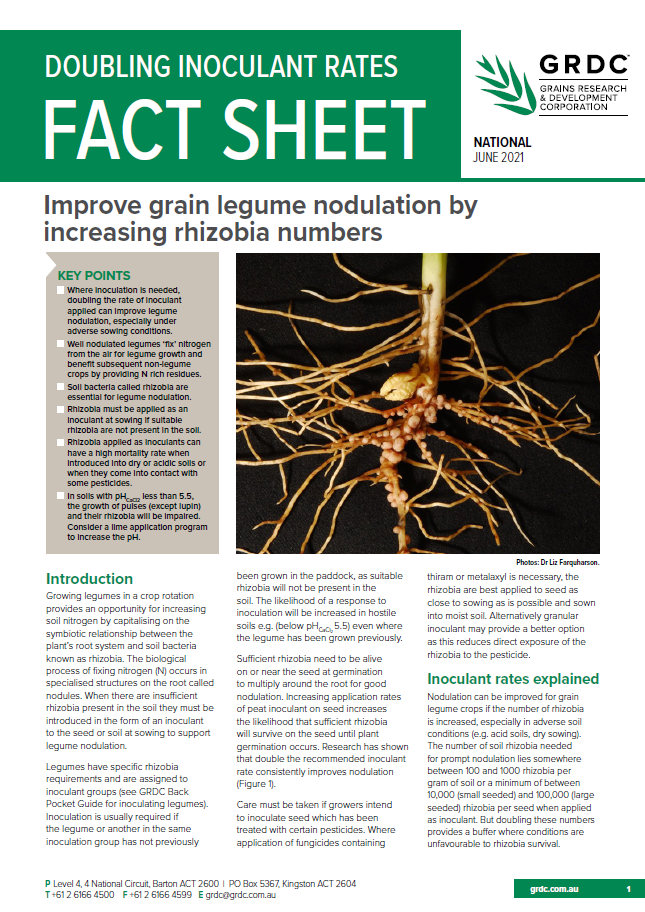Doubling inoculant rates fact sheet
Doubling inoculant rates fact sheet
Published: 04 Aug 2021
Growing legumes in a crop rotation provides an opportunity for increasing soil nitrogen by capitalising on the symbiotic relationship between the plant’s root system and soil bacteria known as rhizobia. The biological process of fixing nitrogen (N) occurs in specialised structures on the root called nodules.
When there are insufficient rhizobia present in the soil they must be introduced in the form of an inoculant to the seed or soil at sowing to support legume nodulation.
Key points
- Where inoculation is needed, doubling the rate of inoculant applied can improve legume nodulation, especially under adverse sowing conditions.
- Well nodulated legumes ‘fix’ nitrogen from the air for legume growth and benefit subsequent non-legume crops by providing N rich residues.
- Soil bacteria called rhizobia are essential for legume nodulation. Rhizobia must be applied as an inoculant at sowing if suitable rhizobia are not present in the soil.
- Rhizobia applied as inoculants can have a high mortality rate when introduced into dry or acidic soils or when they come into contact with
some pesticides. - In soils with pHCaCl2 less than 5.5, the growth of pulses (except lupin) and their rhizobia will be impaired. Consider a lime application program to increase the pH.
Download PDF
Region: National
GRDC Project Code: MSF1806-002SAX,

